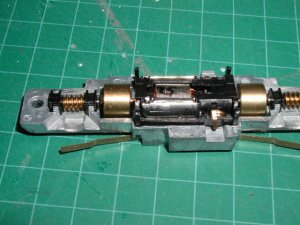I am having real problems with a GP7 Phase I CP loco that I purchased probably 18 months ago.
When I initially bought it, I had to take it back to my local LMS after 2 days because it wouldn’t run at all. They got it running reasonably well, but it was still VERY noisy.
It has sat in the box since that time, but I took it out again on the weekend because I’m finally wiring the control panel to my coffee table layout.
Here’s the main problem I’m experiencing --- basically, it either does not run or needs a lot of ‘coaxing’ (ie pushing) to get it running at voltages up to approx. 8 volts. It runs fine at higher voltages, although it is by far the noisiest N or HO loco I’ve ever owned!
Any suggestions? I am reasonably mechanical, so I’m quite comfortable trying to get it to run better as long as I know what I should be focussing on to try and determine the root cause.
Thanks
When I initially bought it, I had to take it back to my local LMS after 2 days because it wouldn’t run at all. They got it running reasonably well, but it was still VERY noisy.
It has sat in the box since that time, but I took it out again on the weekend because I’m finally wiring the control panel to my coffee table layout.
Here’s the main problem I’m experiencing --- basically, it either does not run or needs a lot of ‘coaxing’ (ie pushing) to get it running at voltages up to approx. 8 volts. It runs fine at higher voltages, although it is by far the noisiest N or HO loco I’ve ever owned!
Any suggestions? I am reasonably mechanical, so I’m quite comfortable trying to get it to run better as long as I know what I should be focussing on to try and determine the root cause.
Thanks




